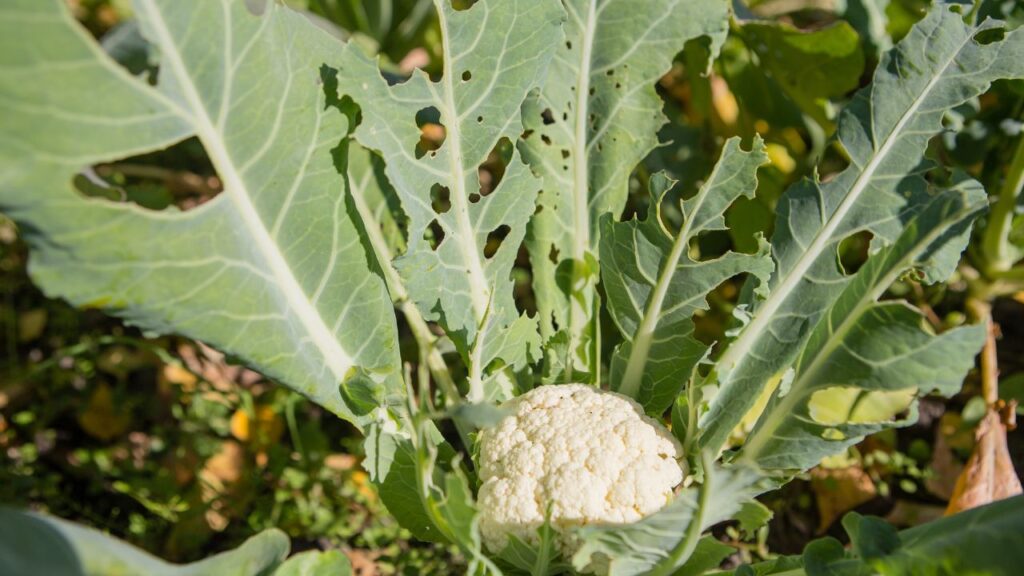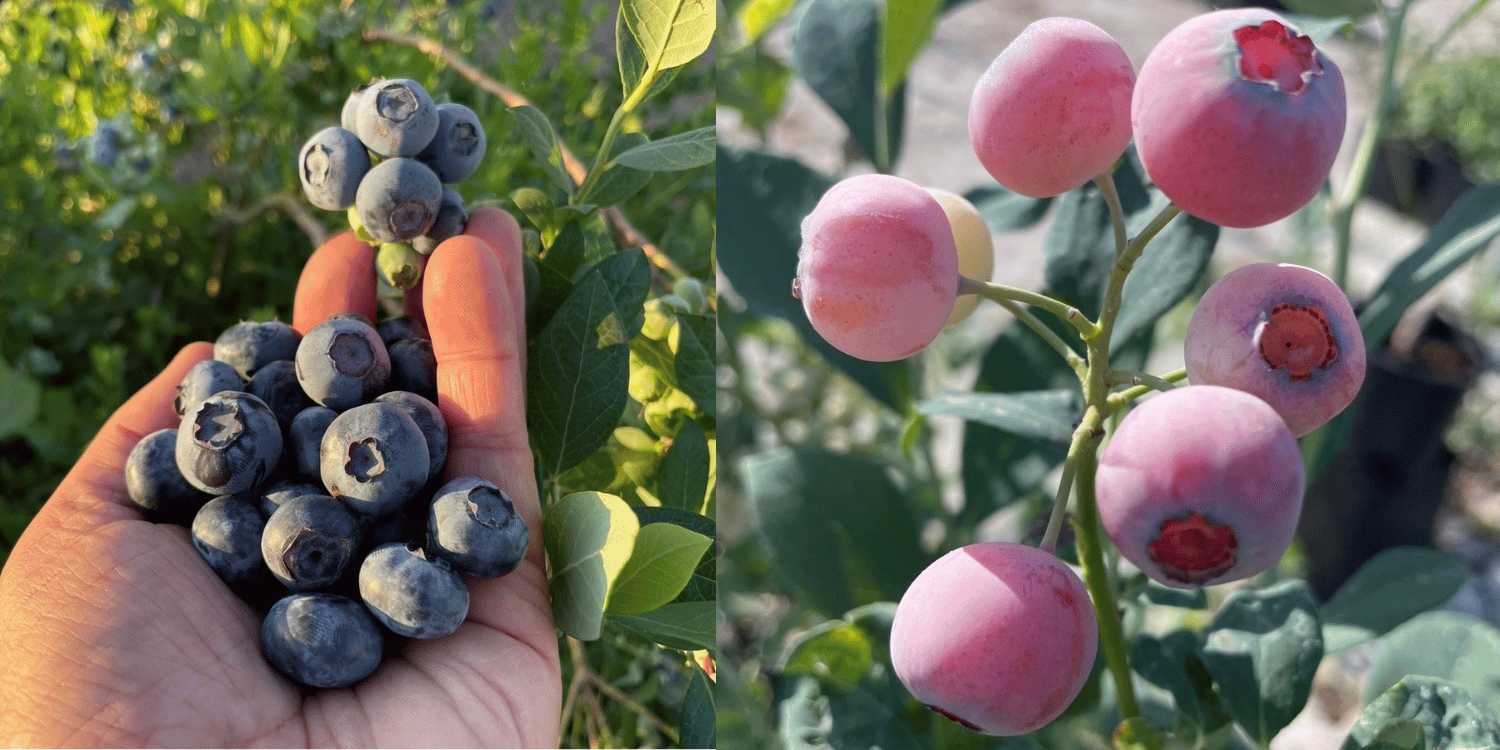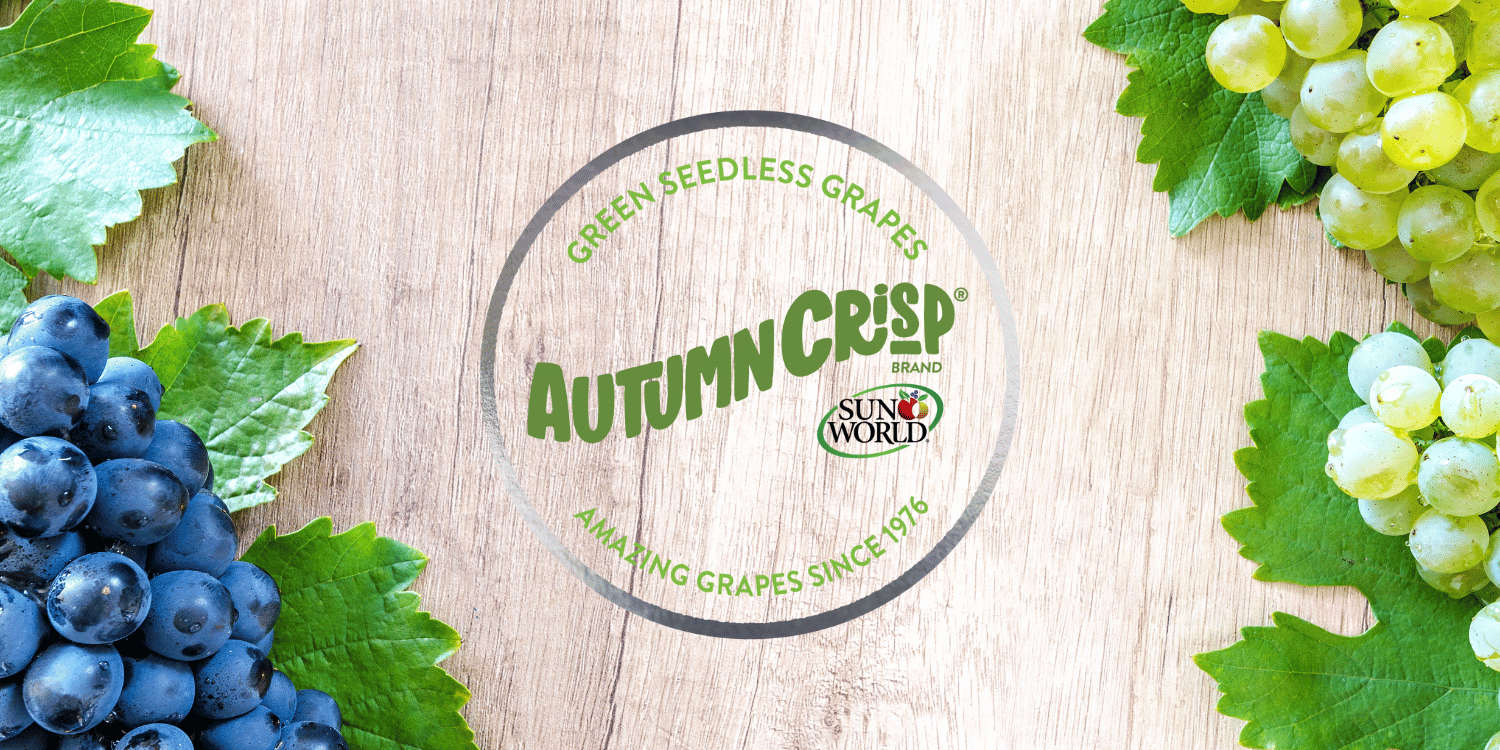The use of AI can be instrumental in predicting and preventing future crop diseases through the collection and analysis of various data points related to crop health.
Firstly, AI can be used to analyze historical data on crop diseases which can help track patterns and predict possible future outbreaks.
Secondly, predictive models can be built using machine learning algorithms which are trained to recognize symptoms of disease in crops.
Advanced imaging technology can further enable AI to inspect crops at a granular level, identifying early signs of potential illnesses.
Fourthly, these AI systems can regularly monitor crops and provide real-time alerts, allowing farmers to act swiftly in response to potential disease.
At the end of the day, AI can lead to effective strategies to preemptively treat crops, reducing the impact of diseases and lessening predicted future crop damage.
- AI drastically improves agricultural outcomes and predicts crop diseases.
- Historical data analysis is crucial for accurate disease prediction.
- Machine learning plays a pivotal role in agricultural advancement.
- Advanced imaging technologies and AI are deeply interconnected in agriculture.
- Real-time AI alerts significantly revolutionize farming and reduce crop damage.
While these insights provide a snapshot of how AI is transforming agriculture, they only scratch the surface of the greater implications within the industry. We will now move on to some of the more granular aspects within this technology-driven revolution.
In the sections ahead, we are going to explore even more intimately the synergies between AI and agriculture. This includes the best-practices for training machine learning models for disease prediction and the types of data that they need to operate efficiently.
Our discussion will also extend to the future possibilities that AI presents in terms of global food security and sustainability. It’s a conversation not to be missed for anyone interested in both the technology and agricultural spheres.
Contents
AI’s Role in Agriculture
In Short: Artificial Intelligence (AI) is progressively redefining agriculture by monitoring crop health, improving soil and crop analytics, and assisting livestock farming through efficient and cost-effective solutions. Despite certain technological barriers and the need for farmer education, AI is being increasingly seen as a transformative force in sustainable farming, with the potential to enhance food security globally.
Known as the lifeblood of civilization, agriculture plays an incredibly important role in our existence.
Have you ever stopped to think about how this important sector is being reshaped with modern technology, specifically Artificial Intelligence?
Artificial Intelligence is gaining momentum in agriculture. Its significance cannot be overstated. As a driving force in modern farming, AI plays many roles in this sector.
One of its roles is monitoring crop health. AI technology can swiftly identify potential diseases or pests attacking the crops.
This prompt detection facilitates early interventions, reducing potential losses. Wouldn’t it be impressive to have an upper hand in avoiding diseases even before they manifest?
Another notable role of AI in farming is enhancing soil and crop analytics.
Agricultural AI can analyze soil conditions and suggest optimum crop varieties for planting. Isn’t that a significant contribution to sustainable farming?
Before dwelling further, here are some specific ways in which AI manifests its increasing relevance to modern farming.
- Through predictive analytics, agricultural AI can forecast various factors such as possible yield, weather conditions, and market trends.
- AI-powered drones assist in crop surveillance, identifying problem areas, and precision farming.
- Robotic harvesters, run by AI, can harvest crops efficiently; reducing labor costs and human error.
- AI contributes to livestock farming by monitoring animal health and assisting in breeding programs.
Are there challenges? Of course, as with any dynamically-evolving technology.
A few barriers are access to high-speed internet in remote farms and the high initial cost of robotics. However, these are being actively addressed as the technology evolves and becomes more affordable.
Another concern is ensuring that farmers are skilled in using AI tools. Do they need training in operating complex software or robotics?
The answer is yes, but the tech industry is fostering symbiotic relationships with the agricultural community to bridge this gap.
These ongoing improvements in technology, coupled with farmers’ openness to embrace change, are what make the synergy between AI and agriculture truly exciting.
The blend of age-old farming wisdom with sophisticated AI technology could, indeed, transform our agricultural systems.
Isn’t it fascinating to think of a future where farms will be largely automated, utilizing AI to its fullest to boost productivity?
By reducing uncertainty in agriculture, AI can contribute significantly to food security around the world. This could be especially significant considering growing global population and climate change.
Pro Tip: Artificial Intelligence has already revolutionized agriculture by monitoring crop health, enhancing soil and crop analytics, predicting various farming factors, enabling precision farming with drones, offering efficient harvesting with robotic systems, and contributing to livestock farming; all this while also potentially increasing food security amid the challenges of a growing global population and climate change.
While we’re still on the journey towards fully AI-driven farms, one thing is clear.
Artificial Intelligence has already set deep roots in agriculture, and it’s here to revolutionize farming. It’s not a distant future vision, it’s already happening in front of our eyes!
How Does AI Predict Crop Diseases?
In Short: Artificial intelligence (AI) predicts crop diseases through machine learning, using algorithms trained on datasets to analyze images of crops, weather, and historical crop data. This revolutionary approach not only detects diseases but also predicts future ones, suggesting preventive strategies and drastically enhancing farming efficiency.
The fundamental concept behind the application of artificial intelligence (AI) in predicting crop diseases is machine learning. Don’t you agree that technology today has greatly revolutionized farming practices?
AI algorithms are trained on datasets, including images of healthy and diseased crops, historical crop and weather data. These algorithms are then capable of analyzing new incoming data to detect the presence of any potential disease in crops.
Think about it like a digital doctor for crops. AI systems are capable of diagnosing crop health, just like doctors do it for us.
Don’t you think that’s fascinating? If you look closer, these AI systems also take into consideration various factors that might affect crop health. The factors include weather conditions, temperature, and moisture levels in the environment.
The most utilized technique is the image recognition technique. It involves the use of AI to analyze images of the crops, thereby detecting the presence of diseases at the earliest stages.
Before we talk more about how this technique works, let’s highlight the fundamental steps followed in this process:
- Data Collection: Gathering vast amounts of datasets, including images of the crops, historical weather, and crop data. The data collected is both of healthy and diseased crops.
- Data Preparation: Cleanse, integrate and transform the collected data into a format suitable for the AI to process.
- Model Training: The AI is trained on the prepared datasets. The more diverse the data, the more accurate the machine learning model becomes.
- Testing and Tuning: This AI model is then tested on fresh data to check its predictive capabilities and fine-tuned for enhanced accuracy.
Once trained, these AI models can successfully examine new images, detecting diseases in the plants and predicting future diseases.
Do you find the insight impressive, that now AI can predict when a disease is about to hit crops? Yes, the AI models can identify the patterns in the data that lead to such diseases.
Another advantage of using AI to predict crop diseases is that it reduces dependency on human experts for disease diagnosis. Imagine the convenience, cost-effectivity and round-the-clock disease predicting service offered by AI!
Moreover, AI models are not only about predicting diseases but also suggest strategies to prevent or treat these diseases. Isn’t that a comprehensive solution for farmers?
Advancements in AI technologies are promising for precision agriculture. They are taking us towards achieving sustainability and productivity in farming. Can you imagine the positive implications of early disease prediction in terms of crop yield and food security?
It won’t be wrong to say that AI has brought an agricultural revolution, providing resilience to climate changes, pests, and diseases. Such a revolution that doesn’t cease to amaze us every day, right?
Significance of Historical Data Analysis
In Short: Historical data analysis is crucial in implementing AI for predicting and preventing future crop diseases, by recognizing patterns, training AI models, optimizing strategies, and managing resources. The validity, regularity, and adaptation of the data to changing environments also play a vital role in providing reliable predictions, aiding global food security and promoting healthier crop yields.
When it comes to implementing AI for future crop disease prediction and prevention, having a rich, historical data is an essential primary step. The central premise here is that to anticipate crucial alterations in the future, we need to understand events of the past.
Historical data holds immense significance as it provides a comprehensive overview of how different factors have interacted over time to affect crop health. This data can include information on past disease outbreaks, climatic conditions, pest invasions, and the resulting crop yield. Isn’t it logical that by analyzing this information, we can identify patterns that enable effective prediction of similar scenarios in the future?
Interestingly, the role of historical data is not limited to prediction alone. It also aids in developing optimized disease prevention strategies. Have you ever noticed a pattern in your life events and made decisions to avoid a recurrence of negative experiences? The same logic applies here.
By analyzing past successes and failures in disease management, farmers and scientists can fine-tune their prevention strategies. It’s about learning from the experience, wouldn’t you agree?
Let’s break down a few key reasons why analyzing historical data is crucial:
- Pattern Recognition: Data analysis helps in spotting disease patterns and trends over time.
- Model Training: Historical data is used to train the AI for accurate predictions.
- Strategy Optimization: By studying past outcomes, prevention methods can be improved.
- Resource Management: Forecasts based on past data can guide better resource allocation and usage.
Another excitement-inducing aspect is, when combined with modern AI techniques, historical data achieves superior capabilities. As these AI systems continue to learn and adapt, they become more adept at making precise, real-time predictions. That sounds pretty useful, doesn’t it?
Picture this: An AI system, trained on historical crop data, identifying a looming crop disease before it becomes visible to the human eye. This could give farmers a head start in combating the disease, potentially minimizing losses. Wouldn’t that be a game-changer?
Let’s also remember, these AI-driven predictions are not limited to individual farms. They can span across regions, countries, and even continents, aiding in global food security. A truly significant application of AI, wouldn’t you say?
However, here’s an important fact to ponder. While historical data is indispensable, its accuracy and relevance to current conditions are also crucial. After all, isn’t it true that reliable predictions depend on reliable data?
Hence, verifying the collected data’s validity, updating it regularly with new findings, and adapting to changing climatic conditions and farming practices is crucial. Failure to do so might lead to inaccurate predictions, wasting time and resources. And we don’t want that, do we?
Therefore, the significance of historical data analysis in AI-powered crop disease prediction and prevention cannot be overstated. It provides the foundation upon which these advanced systems stand, serving as a reliable guide towards a healthier crop yield and a more secure agricultural future. How fascinating is that?
Role of Machine Learning in Agriculture
In Short: Machine learning, as part of AI, can revolutionize agriculture by predicting crop diseases, enhancing yield, and advising on market trends. However, to ensure tech benefits all farmers, broader changes, such as policy shifts and financial assistance, are needed alongside technology advancements.
Machine learning (ML), an integral part of artificial intelligence (AI), holds enormous promise in revolutionizing the agricultural sector. But how exactly can it help?
First and foremost, ML helps in predicting crop diseases and potential pest outbreaks. This is done by analyzing numerous crop images and data collected from different sources such as satellites, drones, and ground sensors. Consequently, this helps to detect early signs of any disease or pest attacks. Did you know this can potentially save billions of dollars?
Moreover, these ML systems can also improve crop yields by optimizing irrigation schedules, based on weather patterns or soil conditions. It’s more about smarter farming, isn’t it?
Speaking of smart farming, let’s have a look at some concrete examples of ML applications in agriculture.
- Precision farming: Employing ML models to understand and predict various factors that could influence the crops positively or negatively.
- Yield prediction: Utilizing ML algorithms to predict the crop yield based on the weather patterns and crop features.
- Weed detection: Implementing ML for distinguishing weeds from crops, enabling efficient weed management.
- Quality control: Using AI technology for sorting and grading of fruits/vegetables based on their size, weight and other features.
Can you imagine the significance of these applications?
Furthermore, machine learning can provide farmers with predictive market analysis. With sufficient data on supply, demand and prices of various crops, ML can foresee market trends which can guide the farmers towards the most profitable crops for the coming season.
Are you seeing the pattern? It’s all about data analysis!
The role of AI, especially machine learning, in agriculture is monumental. From accurate disease detection to predicting market trends, it is empowering farmers to make more informed decisions. And while these technologies are remarkable, they should be made widely available and affordable for all farmers across the globe. Don’t you agree?
Pro Tip: Machine learning, an integral part of artificial intelligence, holds enormous promise in revolutionizing the agricultural sector by predicting crop diseases, optimizing irrigation, enhancing yield prediction, aiding weed detection, ensuring quality control, and providing predictive market analysis.
As we continue to work towards sustainable and efficient farming practices, it is essential to explore the impact and implications of machine learning in agriculture. After all, technology is only beneficial when it serves the needs of the many, not just the few, right?
Lastly, let’s remember that ML alone cannot do miracles. It’s a tool that can significantly aid farmers, but holistic development of the agricultural sector requires broader changes. These include government policies, social perceptions of farming, and financial support for farmers. It is indeed an exciting time in the agricultural sector, wouldn’t you say?
AI and Advanced Imaging Technology
In Short: AI’s interaction with advanced imaging technology, specifically hyperspectral and thermal imaging, is greatly impacting agriculture, enabling proactive responses to crop diseases and potential pest outbreaks. Through AI and deep learning, collected data is interpreted and used to predict crop health and yields, marking the onset of an agricultural revolution.
One of the critical aspects resulting in AI’s significant impact on agriculture is its interaction with advanced imaging technology. This powerful alliance is reshaping our ability to understand, predict, and tackle crop diseases, wouldn’t you agree?
Let’s dig in further. What does this combination achieve, and how does it play out in real-world scenarios? Basically, it provides us with insightful information about the health of a farm and its crops. Such information is profoundly changing our reactive approaches to more proactive ones.
AI-powered solutions usually entail the use of sensors and machines. These collect various kinds of data, envisaging hidden patterns and trends, but can we understand this data? That’s where advanced imaging technologies step in.
Drones or stationary cameras with hyperspectral and thermal imaging capabilities capture detailed pictures of the farm. This results in a more refined glimpse into the health conditions of our crops. These are not your regular photographs, are they?
A thorough discussion on this topic ought to address the key functionalities of these imaging technologies. Let me recap them for our collective understanding:
- Hyperspectral imaging uses a broad spectrum of light to capture data from the immediate environment. It helps to differentiate healthy plants from not-so-healthy ones. Yes, based on how they reflect and absorb light! Interesting, right?
- Meanwhile, thermal imaging is developed to recognize heat signatures. It allows us to identify plants under stress due to pests or other diseases. It’s as if we had superhuman sight, don’t you think?
But it’s not just the capture of data that matters. Analysis plays an equally crucial part. Thanks to AI, these vast amounts of complex data can be correctly interpreted. Even minute changes that the human eye may miss, AI won’t, isn’t that fascinating?
Furthermore, AI and deep learning algorithms can scan through this data to predict potential outbreaks of diseases. Even crop yields can be predicted. Yes, you heard it right, the magic of AI can bring us a step closer to predicting the future!
This prediction enables farmers and organizations to take pre-emptive action before a disease outbreak. It’s amazing how technology empowers us to act timely and efficiently, don’t you think? Imagine the number of crops, and the amount of money, we can save with this technology. Would that not revolutionize the entire agriculture industry?
Also, as the machines learn over time, their predictions become more accurate. Imagine, an AI-powered machine learning from its experiences, just like us. Seems like science fiction, but it’s reality.
Let me tell you, AI combined with advanced imaging technology has an immense potential not just for predicting but also preventing crop diseases. We’re on the threshold of an agricultural revolution, powered by none other than artificial intelligence and image technology. The possibilities are mind-boggling, aren’t they?
Real-Time Alerts: A Revolution in Farming
In Short: Artificial Intelligence (AI) is revolutionizing agriculture by providing real-time alerts to identify and prevent crop diseases. Through machine learning algorithms, this system instantly notifies farmers, suggests preventive actions and offers improved efficiency by reducing unexpected interruptions.
Artificial intelligence (AI) has heralded a new era in agriculture.
It’s not just about predicting diseases – it’s about preventing them.
Now, let’s talk about something extraordinarily impactful – real-time alerts.
Why so influential, you ask?
Simple, imagine having a system that constantly monitors your crops.
A system that immediately identifies any potential problems.
A crop disease can spread quickly once it takes root.
Without an early warning system, the disease can wipe out a whole field before a farmer can react.
That’s where the beauty of AI comes in.
It can predict these diseases in advance, and deliver real-time alerts to farmers.
Quick response? Yes, please.
Here are a few ways AI-based real-time alerts can revolutionize farming:
- Immediate Action: The moment a potential problem is detected, the farmer is notified.
- Preventive Measures: AI can suggest actions a farmer can take to prevent the disease from spreading.
- Improved Efficiency: Operations can be performed smoothly as unexpected interruptions are drastically reduced.
This all sounds incredible, doesn’t it?
It is, but what kindof AI achieves these feats?
Machine learning algorithms collect data on weather patterns, soil conditions, and crop health.
They analyze this data to predict potential diseases.
Real-time alerts are then delivered to farmers’ mobile devices.
In the middle of tilling a field, you ask?
You’ve guessed right.
The moment there’s a problem, it’s flagged and an alert is sent out.
There’s no delay, no downtime, just swift and effective action.
Does stricter control sound possible now?
With AI, it’s not only possible, it’s happening.
AI is already playing a major role in helping predict and prevent crop diseases.
The future holds limitless possibilities.
But what’s next?
Soon enough, it won’t just be about one farm.
These systems will connect with each other, sharing data and alerts.
Keeping everyone on their toes, preventing crop disease on a regional level.
Exactly, a whole new way of farming is emerging.
And AI-powered real-time alerts are at the forefront of this revolution.
How Can AI Reduce Crop Damage?
In Short: AI can reduce crop damage by using predictive algorithms to anticipate disease outbreaks and unfavorable weather patterns, enabling farmers to take preventive action. Additionally, AI-driven robots and drone technology can perform delicate tasks, manage resources, and provide detailed assessments for healthier, more efficient crop production.
The use of Artificial Intelligence (AI) in agriculture undeniably holds substantial promise. But how exactly can it contribute to the reduction of crop damage?
Addressing this requires an in-depth understanding of the mechanisms involved in AI deployment within this sector.
Primarily, AI-powered predictive algorithms can analyze climate data and alert farmers in advance of possible disease outbreaks.
Timely action based on these alerts can mitigate the consequences of the foreseen diseases, reducing crop damage.
It’s like giving our agrarian companions a proactive defense system, don’t you think?
Predictive algorithms can also detect unfavorable weather patterns that are often detrimental to crops.
AI can, therefore, help to introduce preventive measures against diseases before they take a toll on crop productivity. Is that not an invaluable advantage?
The advantages that AI holds in this regard are immense, demonstrated in a few ways:
- Pest Control: AI can identify the type and severity of pest infestations, allowing farmers to apply the right kind of pesticides and just in the right amounts. This prevents excess pesticide use, which is harmful to both people and the environment.
- Disease Diagnosis: AI-driven image recognition technology allows for early detection and diagnosis of plant diseases. This leads to quicker actions in addressing the problem, thus reducing crop damage.
- Weather Analysis: AI can analyze weather patterns and make accurate predictions for future conditions. By understanding this data, farmers can better manage their crop planting and cultivation strategies.
Furthermore, AI-driven robots can perform delicate tasks such as pruning, weeding, and harvesting.
The precision of these robots contributes to reducing unnecessary damage to healthy crops.
Moreover, AI can guide farmers to allocate resources optimally.
By indicating the exact amount of water, fertilizers, and other inputs required, AI helps to avoid overutilization that may cause damage to crops.
Furthermore, drone technology combined with AI can provide high-resolution aerial images that can be used for detailed crop health assessment. These details can shed light on the presence of diseases that may not be visible at the ground level.
Additionally, machine learning models powered by AI can predict future yield based on present parameters. This can aid in early detection of possible crop failure due to diseases or pests.
Pro Tip: AI in agriculture can help reduce crop damage through predictive algorithms that analyze climate data for disease outbreaks and unfavorable weather patterns, and allow for preventive measures, early disease detection, and optimized resource allocation.
All these aspects put together, it’s clear how AI is poised to revolutionize the agriculture industry by offering effective solutions for reducing crop damage.
It’s exciting, isn’t it, to envision a future where AI plays a central role in advancing agricultural practices? Especially with the potential to reduce crop damage and revolutionize the industry in its entirety.
Preemptive Treatment Strategies via AI
In Short: AI’s predictive abilities and data processing capabilities enable preemptive treatment strategies in agriculture, potentially saving entire harvests from disease damage. Utilizing weather forecasts, thermal imaging and crop data analysis, AI provides revolutionary disease management tools that can prevent food shortages and save billions in the agricultural industry.
The promise of using AI in agriculture lies primarily in its ability to predict and prevent, doesn’t it?
This ability allows for preemptive treatment strategies that can potentially protect entire harvests from disease damage.
Let me tell you, what makes AI so effective in this realm?
The secret resides in its data processing capabilities.
AI systems can analyze huge amounts of data captured from a variety of sources. This could range from satellite images to crop temperature readings.
Such information, meticulously analyzed, helps in the early detection of crop diseases.
What if we could reduce disease impact by addressing it before it even happens?
That’s where preemptive treatment strategies come into play.
These strategies aim to utilize AI for understanding disease patterns and proposing treatments.
But how exactly does AI predict and protect against crop diseases? Let’s dig in into this.
Here are three major ways AI helps in foresight and prevention:
- By predicting weather patterns to forecast potential disease outbreaks,
- By using thermal imaging to identify early signs of disease in crops,
- And by analyzing crop images and data to recognize signs of plant stress indicative of disease.
Each method is important and has its notable benefits.
AI could be utilized to predict weather patterns that could lead to disease outbreaks.
This means farmers and agriculturists can prepare beforehand.
The ability of AI to use thermal imaging as an early disease detection tool could prove revolutionary.
Images collected can be analyzed by AI systems to detect subtle changes in temperature that humans may miss.
Isn’t it amazing that AI could even recognize signs of plant stress that could potentially indicate disease?
By implementing preemptive treatment strategies via AI, the agricultural industry can save billions.
Not only limiting the financial impacts, but also preventing food shortages and related crises.
This is the incredible potential of AI in agriculture, don’t you agree?
Yet, the truth remains that we’re just only beginning to scratch the surface of what’s possible.
Pro Tip: AI’s ability to analyze large data sets from various sources like satellite images and crop temperature readings allows for preemptive treatment strategies, potentially protecting entire harvests from disease damage by understanding disease patterns, predicting weather patterns, and identifying early signs of disease in crops.
Continuous research and innovation will surely lead us to groundbreaking applications of AI in disease management and beyond.
Yes, the journey ahead is promising and exciting!
The Bottom Line
AI is making significant strides in the agricultural sector, providing invaluable insights to help mitigate crop diseases and improve overall productivity.
By wielding the power of predictive analytics, AI can offer timely warnings about potential crop diseases, allowing farmers to take preventive measures at an early stage.
The incorporation of historical data analysis is key to understanding patterns and trends, which are indispensable in understanding the possible emergence of diseases.
Machine learning plays a pivotal role in improving the accuracy of predictions by leveraging complex algorithms and big data, making agricultural tasks more efficient and less labor-intensive.
Using advanced imaging technology, AI can monitor crop health at a granular level, detecting not only diseases but also infestations and nutrient deficiencies.
The introduction of real-time alerts is a game-changer in farming practices, which allows farmers to respond promptly to any potential threats to their crops.
When effectively deployed, AI holds the potential to minimize crop damage significantly by utilizing predictive interventions and tailored treatment strategies.
Finally, with preemptive treatment strategies powered by AI, farmers can address the potential threats prior to its occurrence, thus, enhancing crop yields and driving agricultural sustainability.




















